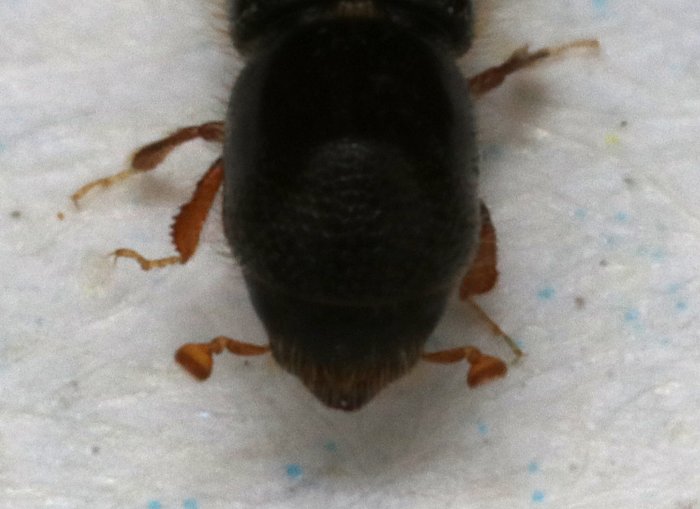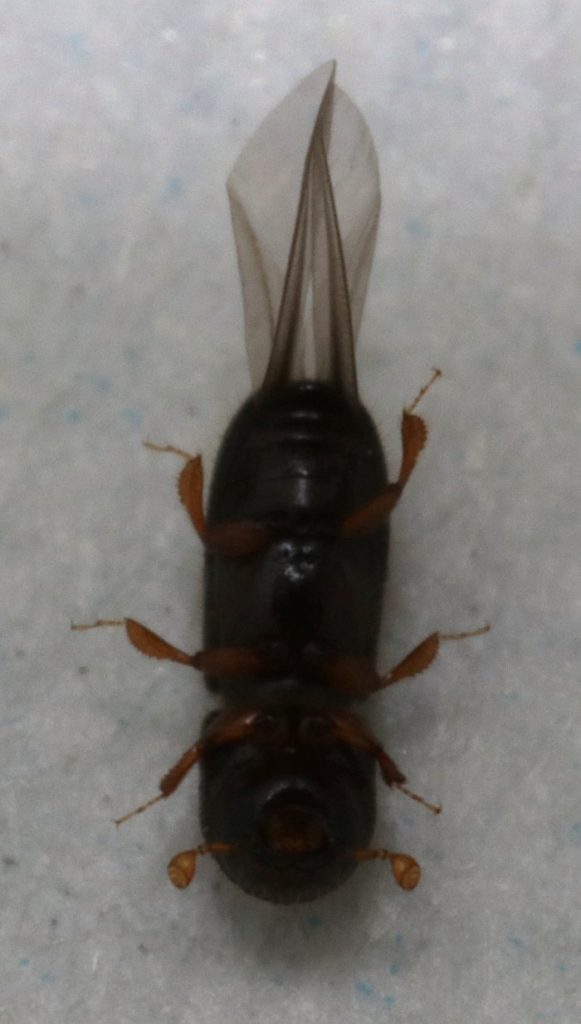Tiny Bark Beetle

We found this little beetle crawling on a magazine on our dining room table on August 9, 2025. The text on the page is standard magazine font, so she’s not a lot bigger than most punctuation marks. This is another one that was hard to photograph clearly because it is too dark, but here are my best shots:




I thought this was one of the small beetles that are well-known for getting into houses, like drugstore beetles or cigarette beetles, but it turns out it doesn’t really look like either of those. What it does look like, is one of the bark-boring beetles in the genus Xyleborinus, of which there are several. All of which look a lot alike, and mainly differ in which kinds of trees they bore into.
So, I am going to go with it most likely being Xyleborinus attenuatus, because (a) BugGuide shows us being within its range, and (b) its preferred food plants are adler, birch, hazelnut, oak, willow, and basswood. All of which are growing in some profusion within a few hundred feet of our house. Oh, and it is also an invasive species from Asia that just got to North America around 1996, which means we are still in the “explosive reproduction” phase of an invasive species moving into the area. Oh joy.
Incidentally, I referred to this specimen as “she” earlier. This is mainly because of the wings. It turns out that beetles in this tribe of insects have winged females, but the males are wingless and reduced in size.
Like a lot of bark beetles, they burrow under the bark of trees to eat the cambium layer. They normally only attack trees that are weakened or have damaged bark. One they get under the bark, they chew out galleries that allow fungal infections to get in, and if they eat too much of the cambium (going all around the bark), they can girdle branches and kill them. So, in general, not good for the trees.
